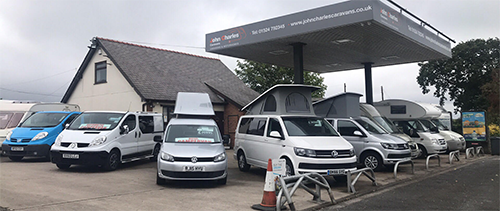1. Caravan weight to car kerb weight ratio
A driver with extensive towing experience can tow a caravan of up to 100% of the kerb weight of the tow car. Ideally the ratio of below MTPLM to Tow Car Kerb Weight of less than 85% should still be maintained. A ratio of MTPLM to Tow Car Kerb Weight of greater than 100% is not recommended even if the car manufacturer states a higher limit in their data. This is not a legal limitation but guidance based upon industry experience and a driver may legally tow a trailer up to the limit stated by the tow car manufactuter.
A driver with little or no towing experience should limit the MTPLM to Tow Car Kerb Weight ratio to less than 85%. This is not a legal limitation but guidance based upon industry experience. Any such result is highlighted in red in the summary table above. Please note: In some circumstances it is possible for the caravan manufacturer to reduce the MTPLM of the caravan to allow for a greater choice of tow car. This will have a direct effect on the user payload.
2. Gross Train Weight
The gross train weight is the sum of the gross vehicle weight of the tow car and the MTPLM of the caravan. For drivers that passed their driving test after 1st January 1997 this must not exceed 3500Kg unless they have passed an additional test to gain a category B+E endorsement on their licence.
3. Noseweights
The caravan nose weight is the downwards force on the car’s towball and it varies depending upon how the caravan is loaded.
The results given in the summary table are:
The ratio of 5% MTPLM to Tow Car Maximum Tow Bar Load
For stable towing the caravan’s nose weight should ideally be around 7% of its MTPLM however it is acceptable for it to be little higher and it may drop as low as 5%. In all cases the following limits must not be exceeded:
The car manufacturers’ maximum tow bar load
The caravan coupling hitch limit (usually stamped on the hitch) The tow bar manufacturers’ limit
4. MTPLM to Gross Trailer Weight Braked:
This is the ratio of the MTPLM to the Gross Trailer Weight Braked, expressed as a percentage. It is illegal to tow a caravan where this ratio is greater than 100%. It is good practice to leave some weight in reserve if possible, hence any value of between 85% and 100% is highlighted as a caution.
5. Definitions: Car
Kerb weight
Car manufacturers’ definitions vary but in general terms it is the weight of the car in working order (with fuel and fluids) but without any occupants or luggage
Gross vehicle weight
The maximum allowable weight of the car when fully loaded. When towing, this will include the noseweight of the caravan.
Towing load limit
The maximum weight of a braked trailer that the car is allowed to tow.
Certain car manufacturers specify a range of maximum towing limits for certain models. This may depend on the number of passengers. This may mean that the actual maximum towing limit for your actual car is less than that shown above in some operating conditions. It’s important that the towing capacity figure that should be used for your car is that which is stamped on the Vehicle Identification Number Plate, (VIN Plate).
Noseweight limit
The maximum weight (down force) that may be exerted on the towball when a towbar is fitted.
Caravan
MTPLM
Maximum Technical Permissible Laden Mass – This is the maximum weight the caravan can be loaded to and legally be taken on the road.
MRO
Mass in Running Order – From 2011 this is the weight of the caravan as it leaves the factory plus an allowance for gas, water, fluids and the electric hook up cable. Prior to 2011 some or all of these items may not have been included.
Mass of Optional Equipment
The fitting of after-market options will reduce the payload available for other items – e.g. a mover by approx. 35kg (70kg where two are fitted on a twin axle caravan)
The driver must ensure that: The car’s Gross Vehicle Weight is not exceeded, the caravan’s MTPLM is not exceeded, the combined actual laden weight of the car and caravan does not exceed the car’s Gross Train Weight.
User Payload
The total weight allowable for after-market optional equipment and for users personal effects. This is usually the difference between the MTPLM and the MRO.
Noseweight
The down force exerted by the caravan on the towball of the car.
6. Limitations:
If the caravan body length exceeds 7m long then it can only be towed by a towing vehicle with a gross weight greater than 3,500 kg. This excludes all cars and light vans.
Disclaimer
The data on which this advice is based is obtained from manufacturers’ published data and credible industry data suppliers and is based on UK models only with standard specification with no extra equipment fitted. While every reasonable precaution has been taken to ensure the accuracy of the data, the National Caravan Council Ltd cannot accept any responsibility for the consequences of any errors or omissions which may occur.
The information supplied herewith is provided and intended as a guide only. The only towing capacity figure/Gross Train Weight figure that should be used for your car is that which is stamped on the Vehicle Identification Number Plate, VIN Plate. The VIN plate can usually be found under the bonnet or on a door pillar and details of the location will be in the owner’s handbook. The plate will be either an alloy plate riveted to the body or a sticker. The VIN plate will display either 3 or 4 sets of weights. It is these weights that the authorities (Police) use to determine whether your vehicle is over-laden.
Note: Certain performance, hybrid and city-car models or similar variants of standard models are not homologated to tow, this means that the vehicle manufacturer has deemed that the model is unsuitable for use as a tow vehicle. With this type of vehicle the towing capacity will equate to zero or a gross train weight will not be displayed or will be the same as the Gross Vehicle Weight.

 Bailey ranger 500/5
Bailey ranger 500/5

